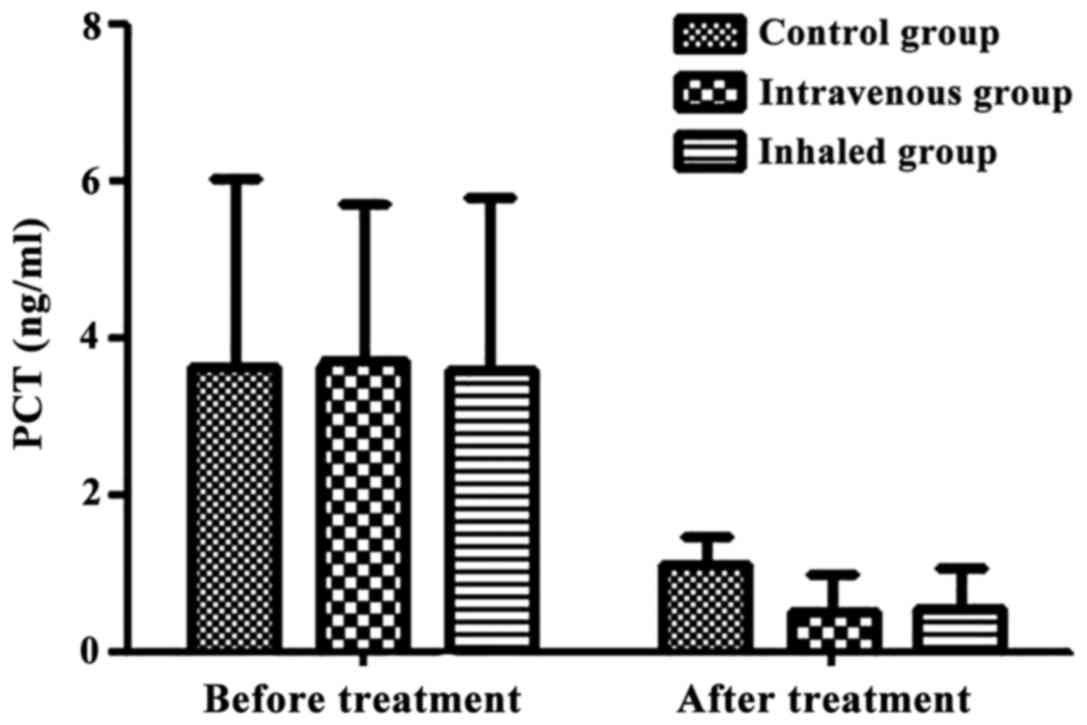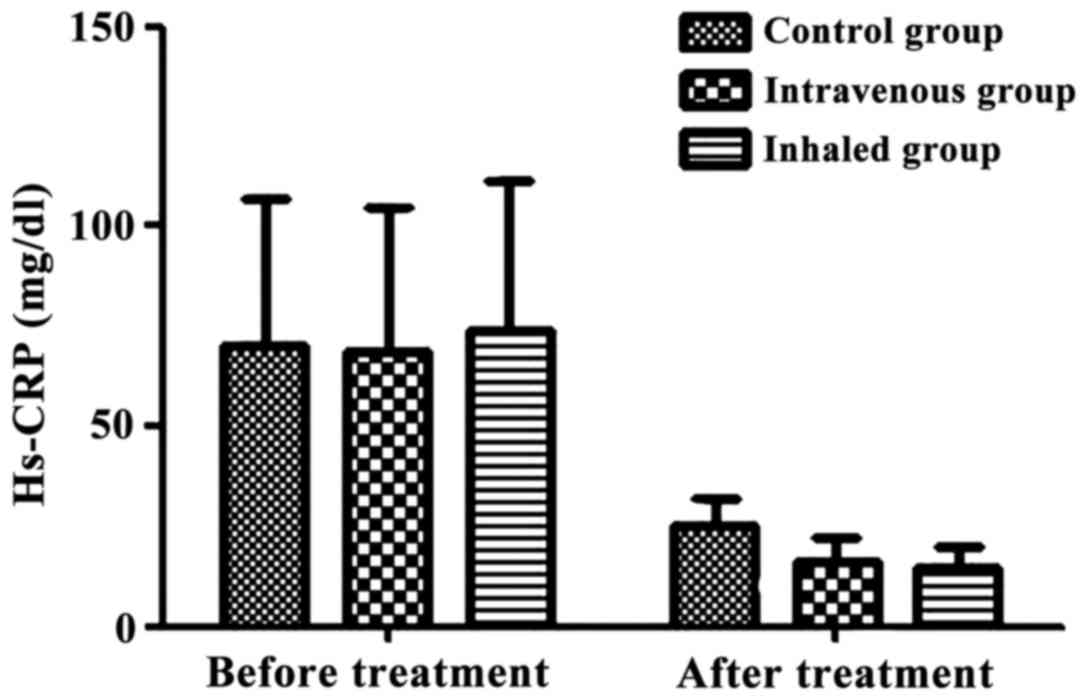Comparison of efficiency of inhaled and intravenous corticosteroid on pregnant women with COPD and the effects on the expression of PCT and hs-CRP
- Authors:
- Published online on: March 30, 2018 https://doi.org/10.3892/etm.2018.6011
- Pages: 4717-4722
-
Copyright: © Zhao et al. This is an open access article distributed under the terms of Creative Commons Attribution License.
Metrics: Total
Views: 0 (Spandidos Publications: | PMC Statistics: )
Total PDF Downloads: 0 (Spandidos Publications: | PMC Statistics: )
Abstract
The efficiency of inhaled and systemic corticosteroids on pregnant women with chronic obstructive pulmonary disease (COPD) was investigated. The study also compared the effects of the administration on the expression of inflammatory mediator procalcitonin (PCT) and high-sensitivity C-reactive protein (hs-CRP). A total of 120 pregnant COPD patients were recruited and randomly allocated into the following three groups: Intravenous corticosteroid treatment group (n=42), inhaled corticosteroid treatment group (n=38), and control group (without any corticosteroid treatment, n=40). Patients of the all three groups received symptomatic supportive treatments including oxygen therapy, anti-infection therapy, expectorant, and bronchodilator. The serum PCT and hs-CRP expression levels were measured before treatment and after 7 days of treatment. Moreover, the clinical parameters such as symptoms, blood gas analysis parameters, pulmonary function indexes, fasting blood glucose (FBG) and adverse reactions were recorded. The overall clinical effective rates of the group received budesonide inhalation and the group receiving systemic methylprednisolone treatment were comparable. Both treatments were able to reduce the levels of inflammatory mediators, hs-CRP and PCT. On the other hand, treatments increased PaO2 of arterial blood gas while reducing PaCO2, thereby improving the lung function (FEV1% pred and FEV1/FVC) (P>0.05). The study observed that the FBG levels in COPD patients receiving systemic corticosteroid treatment were significantly increased, while budesonide inhalation did not significantly affect the FBG levels. In addition, rates of adverse events (such as mouth dry, oral ulcers, hoarseness) of systemic corticosteroid treatment group were significantly higher than those in inhaled corticosteroid treatment group and control group (38.1% vs. 17.5% vs. 5.0%, comparison between groups: P<0.05). In conclusion, inhaled and systemic use of corticosteroid both significantly improved dyspnea and other clinical symptoms of pregnant COPD patients by increasing oxygen partial pressure, correcting hypoxemia, and enhancing lung function. Moreover, fewer adverse reactions were observed with inhaled corticosteroid treatment, suggesting that inhaled administration is a relatively good, safe and effective treatment for pregnant COPD patients.











